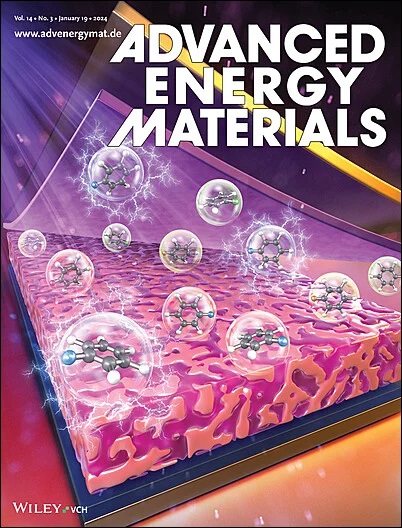Synergistic Effect of Structural and Interfacial Engineering of Metal–Organic Framework‐Derived Superstructures for Energy and Environmental Applications
IF 24.4
1区 材料科学
Q1 CHEMISTRY, PHYSICAL
引用次数: 0
Abstract
In recent years, highly efficient energy storage and conversion devices have become a significant research focus in the field of energy and the environment. Electrically driven catalytic reactions, such as hydrogen evolution reaction (HER), oxygen evolution reaction (OER), and oxygen reduction reaction (ORR), are pivotal pathways for sustainable energy production and serve as the foundation for energy conversion processes. The designed reaction pathways predominantly occur at the surfaces and interfaces of electrocatalysts, which are mainly affected by the structural and interfacial engineering of the electrocatalysts. In this comprehensive review, the latest progress of the electrocatalytic mechanisms and the state‐of‐the‐art in situ technologies for mechanism study are systematically summarized. Additionally, insights into the structural and interfacial engineering of metal organic frameworks (MOFs)‐derived composite superstructures and their enhancing effect on electrocatalytic reactions are presented. Furthermore, this review highlights the practical applications within corresponding energy devices, identifying unresolved challenges and proposing promising directions for future research aimed at realizing practical systems. This review aims to enhance the understanding of the electrocatalytic mechanisms, facilitate discussions on the derivation and practical application of relevant materials, and provide substantial support for the development of energy‐related devices.金属-有机框架衍生的上层建筑在能源和环境应用中的结构和界面工程的协同效应
近年来,高效储能与转换装置已成为能源与环境领域的一个重要研究热点。析氢反应(HER)、析氧反应(OER)和氧还原反应(ORR)等电催化反应是可持续能源生产的关键途径,是能源转化过程的基础。所设计的反应路径主要发生在电催化剂的表面和界面,这主要受电催化剂的结构和界面工程的影响。本文系统地综述了电催化机理的最新研究进展以及电催化机理原位研究技术的最新进展。此外,本文还介绍了金属有机框架(MOFs)衍生的复合材料上层结构的结构和界面工程及其对电催化反应的增强作用。此外,本综述强调了相应能源设备中的实际应用,确定了尚未解决的挑战,并为未来的研究提出了有希望的方向,旨在实现实际系统。本文旨在加深对电催化机理的认识,促进相关材料的衍生和实际应用的讨论,并为能源相关装置的开发提供实质性的支持。
本文章由计算机程序翻译,如有差异,请以英文原文为准。
求助全文
约1分钟内获得全文
求助全文
来源期刊

Advanced Energy Materials
CHEMISTRY, PHYSICAL-ENERGY & FUELS
CiteScore
41.90
自引率
4.00%
发文量
889
审稿时长
1.4 months
期刊介绍:
Established in 2011, Advanced Energy Materials is an international, interdisciplinary, English-language journal that focuses on materials used in energy harvesting, conversion, and storage. It is regarded as a top-quality journal alongside Advanced Materials, Advanced Functional Materials, and Small.
With a 2022 Impact Factor of 27.8, Advanced Energy Materials is considered a prime source for the best energy-related research. The journal covers a wide range of topics in energy-related research, including organic and inorganic photovoltaics, batteries and supercapacitors, fuel cells, hydrogen generation and storage, thermoelectrics, water splitting and photocatalysis, solar fuels and thermosolar power, magnetocalorics, and piezoelectronics.
The readership of Advanced Energy Materials includes materials scientists, chemists, physicists, and engineers in both academia and industry. The journal is indexed in various databases and collections, such as Advanced Technologies & Aerospace Database, FIZ Karlsruhe, INSPEC (IET), Science Citation Index Expanded, Technology Collection, and Web of Science, among others.
 求助内容:
求助内容: 应助结果提醒方式:
应助结果提醒方式:


